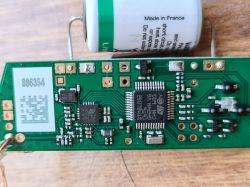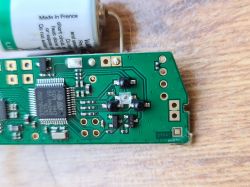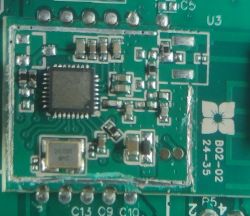On well-known portals, you can find Apator WMBUS modules for around 20PLN, which were used to read water meters. I would like to use them in a home automation system with Home Assistant to report the status of the electricity and gas meter. The energy meter has an OC output and the gas meter has a reed switch. The solution on WMBUS seems rather reliable (battery power supply and transmission of absolute status).
I disassembled such an Apator overlay and as you can see in the photo, we have a diode transmitting infrared pulses and three photodiodes. To change the status of the counter, you have to short-circuit the three diodes one by one - this imitates the rotation of the dial on the water counter. So now I need help in making such a say interface pulse input -> shorting the three photodiodes. What comes to my mind is a sleeping atmega 8, which after waking up would short-circuit the photodiodes one by one with some delay (but I don't know if this solution would not drain the battery). Well, unless someone has a simpler idea? I'd love to get feedback on how to do this most simply. Thanks for the suggestions


I disassembled such an Apator overlay and as you can see in the photo, we have a diode transmitting infrared pulses and three photodiodes. To change the status of the counter, you have to short-circuit the three diodes one by one - this imitates the rotation of the dial on the water counter. So now I need help in making such a say interface pulse input -> shorting the three photodiodes. What comes to my mind is a sleeping atmega 8, which after waking up would short-circuit the photodiodes one by one with some delay (but I don't know if this solution would not drain the battery). Well, unless someone has a simpler idea? I'd love to get feedback on how to do this most simply. Thanks for the suggestions








